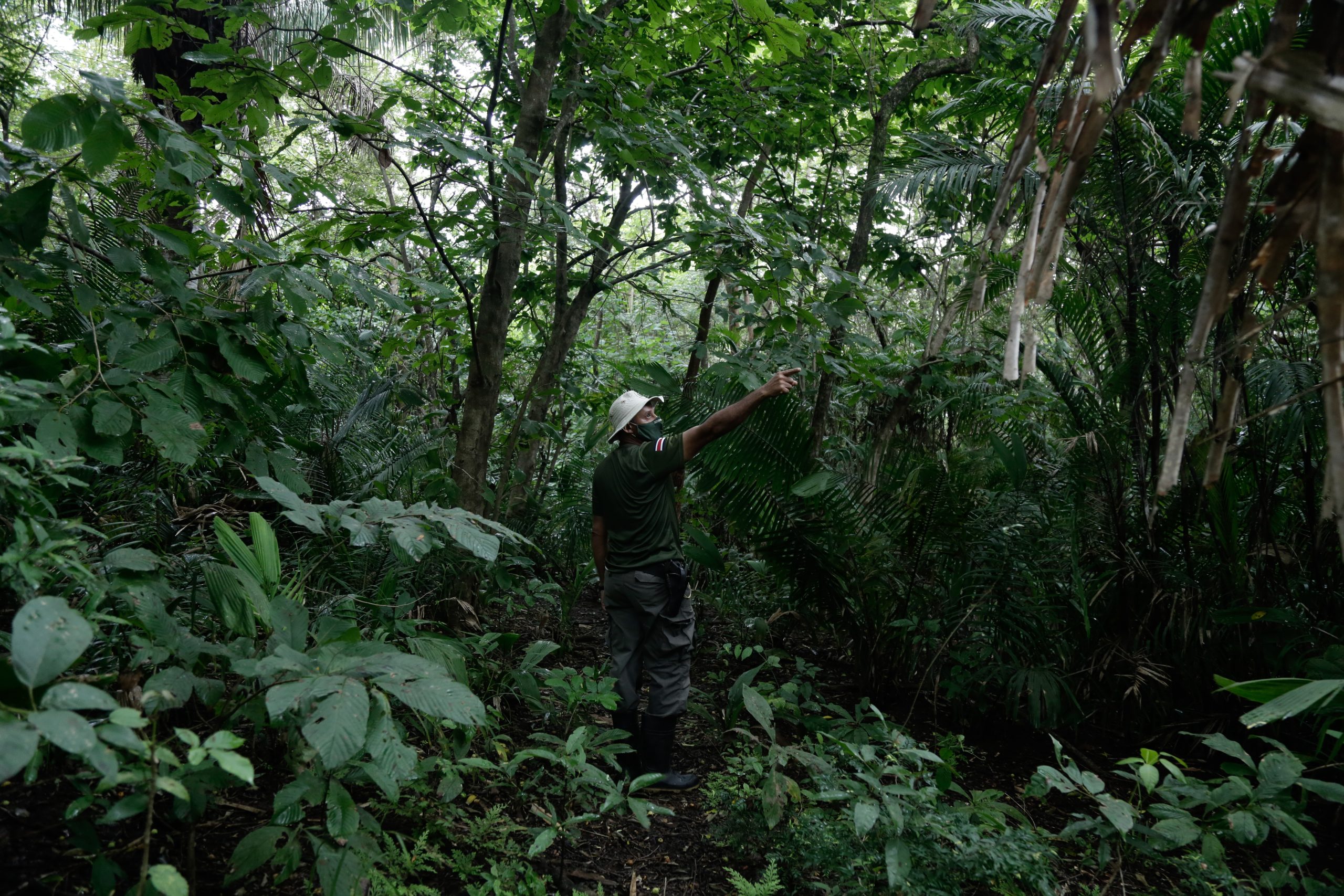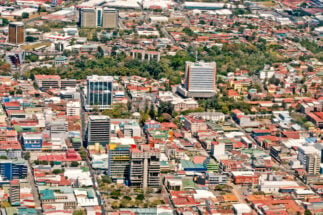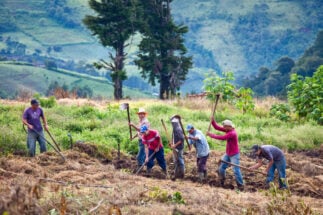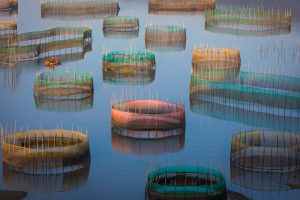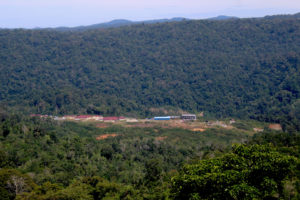Gelberth Obando and Manuel Alvarado excavate four holes in the backyard of the Camaronal National Wildlife Refuge, on the Pacific side of Costa Rica. Though they are not currently on duty, here they will install poles to support the roof of a carpark.
Isolated in the tropical dry forest, these two rangers are in charge of the refuge’s 235 hectares, as well its 15-nautical-mile band of ocean. This site is of immense biological value, with three species of sea turtles, all threatened with extinction, known to spawn on its beach.
Lack of resources has always been a problem at Camaronal. Starting this year, however, the situation worsened when the conservation area cut the monthly money for gasoline in half: from US$193 to $96. In addition, there are no other travel expenses and overtime isn’t paid.
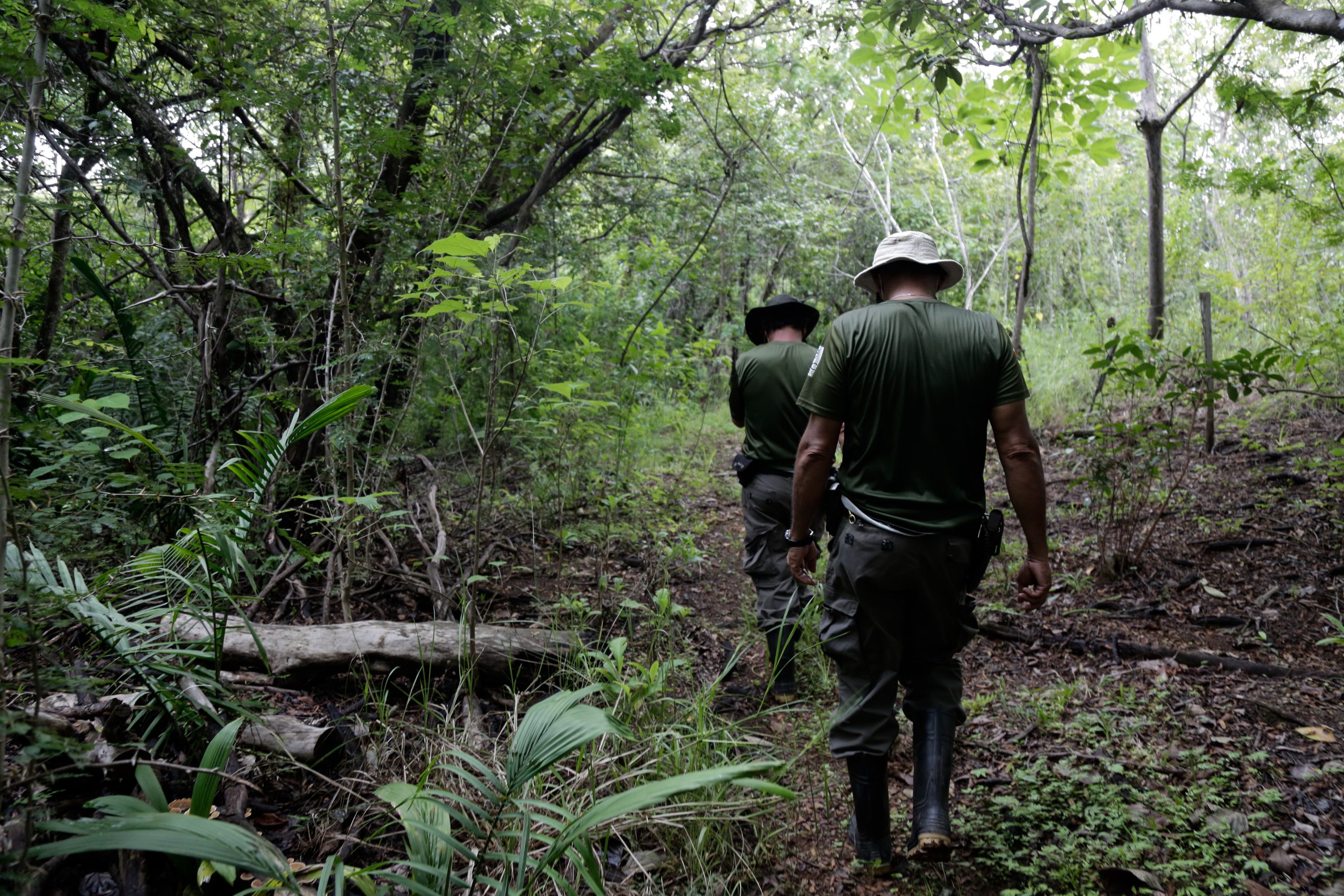
Still, it’s almost time to start the beach patrol: if they don’t protect the turtle eggs, no one else will. They usually go out at night, but today they will have a drill in the afternoon. “Even if they lower the income for a park ranger, we will always give 100%,” says Obando, as he walks into the rainforest.
There have been difficult times in the past, but it’s never been worse than this
The Covid-19 crisis exacerbated financial problems in conservation areas in Costa Rica. After aggressive budget cuts, the National System of Conservation Areas (SINAC) is even in danger of a possible “technical closure” in the coming months, according to Franklin Paniagua, the vice minister of natural resources at the Ministry of Environment and Energy.
“There have been difficult times in the past, but it’s never been worse than this. We can hold out this month (August). But the next month (September) we won’t have the same flexibility. The alarms are already going off,” said Paniagua in an interview with Diálogo Chino.
Last year, the Legislative Assembly of Costa Rica approved a reduction of more than a third in the budget of the conservation areas, which was part of an aggressive package of cuts in various ministries. The cuts sought to contain the impact of the Covid-19 crisis on the country’s weak public finances.
During the first half of 2021, the budget was enough to continue patrolling and operating, though with reductions. However, now most conservation areas have run out of money to pay for transportation, living expenses and overtime for their rangers.
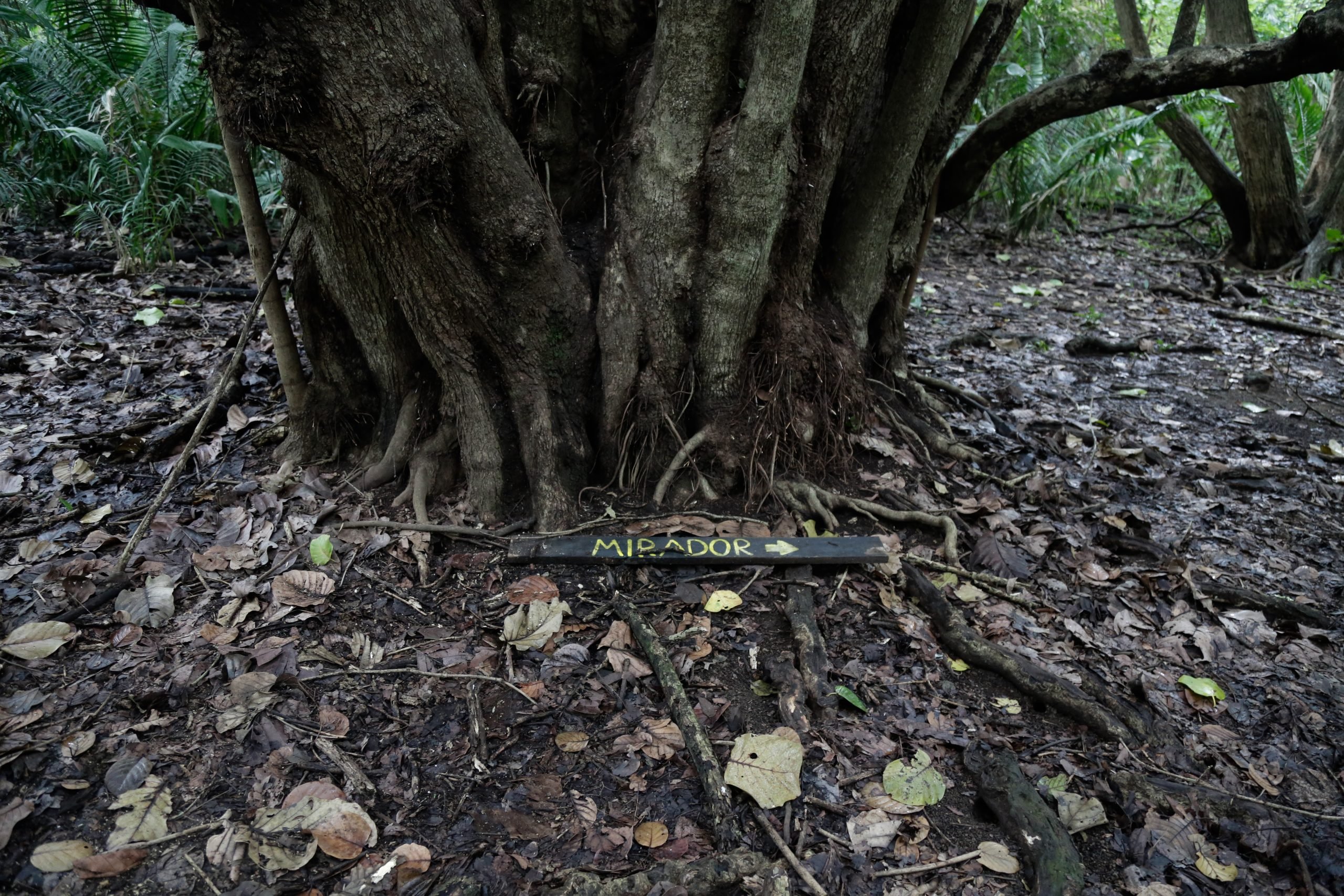
Without sufficient resources, protected areas fail to fulfil their main purpose: natural conservation, says Laura Porras, a researcher at the Wildlife Conservation and Management Institute (Icomvis) of the National University of Costa Rica (UNA).
This fact has already been documented. In 2009, a UNA study found that when there was a drastic cut in staff at Corcovado National Park in the 1990s, the population of saíno (collared peccary) began to decline due to illegal hunting.
To try to get to the end of the year without a crisis, the Executive Power proposed an extraordinary budget to Congress. This would provide some resources to “maintain the minimum operation in national parks,” according to the bill. Despite having been presented for almost two months, the budget has not yet been voted on in the legislative plenary.
While in San José the government negotiates the future of this budget, Obando and Alvarado cross a ravine in the Camaronal dry forest. On the other side, a fisher comes down a hill at a slightly nervous pace. He greets them and they wave back. “We have taken him several times with turtle eggs,” Obando murmurs.
Unprotected areas
The sea begins to sound louder through the trees. The refuge’s beach is a few meters from Obando and Alvarado, but the park rangers prefer to stay hidden. Without the possibility of reinforcements and with a lot of risk involved, they must surprise the invaders of turtle nests.
The hueveros (egg catchers) usually come to Camaronal from neighbouring communities. There, they hide their motorcycles in the forest and enter to dig up nests on the beach, aiming to sell the eggs on illegally. “Sometimes they get violent,” says Obando, who was recently threatened with a machete during a patrol.
Right now we don’t have the personnel to protect the area. If there were cuts, it would be even worse for conservation
The most common eggs in the refuge come from the olive ridley sea turtle (Lepidochelys kempii), but sometimes there are also those of the Pacific black sea turtle (Chelonia mydas agassizii) and the leatherback (Dermochelys coriacea) – all of which are threatened with extinction.
The cuts have made it difficult to protect for the eggs, they say. Gasoline, for example, runs out quickly when detainees need to be taken to local police stations. The lack of per diem also prevents large tracts of land from being covered. “Sometimes you feel like you’re swimming upstream,” says Obando.
The cuts hit harder because of historical deficiencies. For example, the refuge never had the resources to patrol at sea (despite the fact that most of the protected area is marine). In fact, they do not even have their own boat, so they are completely dependent on the support of the coast guards, they explain. If the tide rises, the coast guard can’t get in.
“Right now we don’t have the personnel to protect the area. If there were cuts, it would be even worse for conservation,” says Obando.
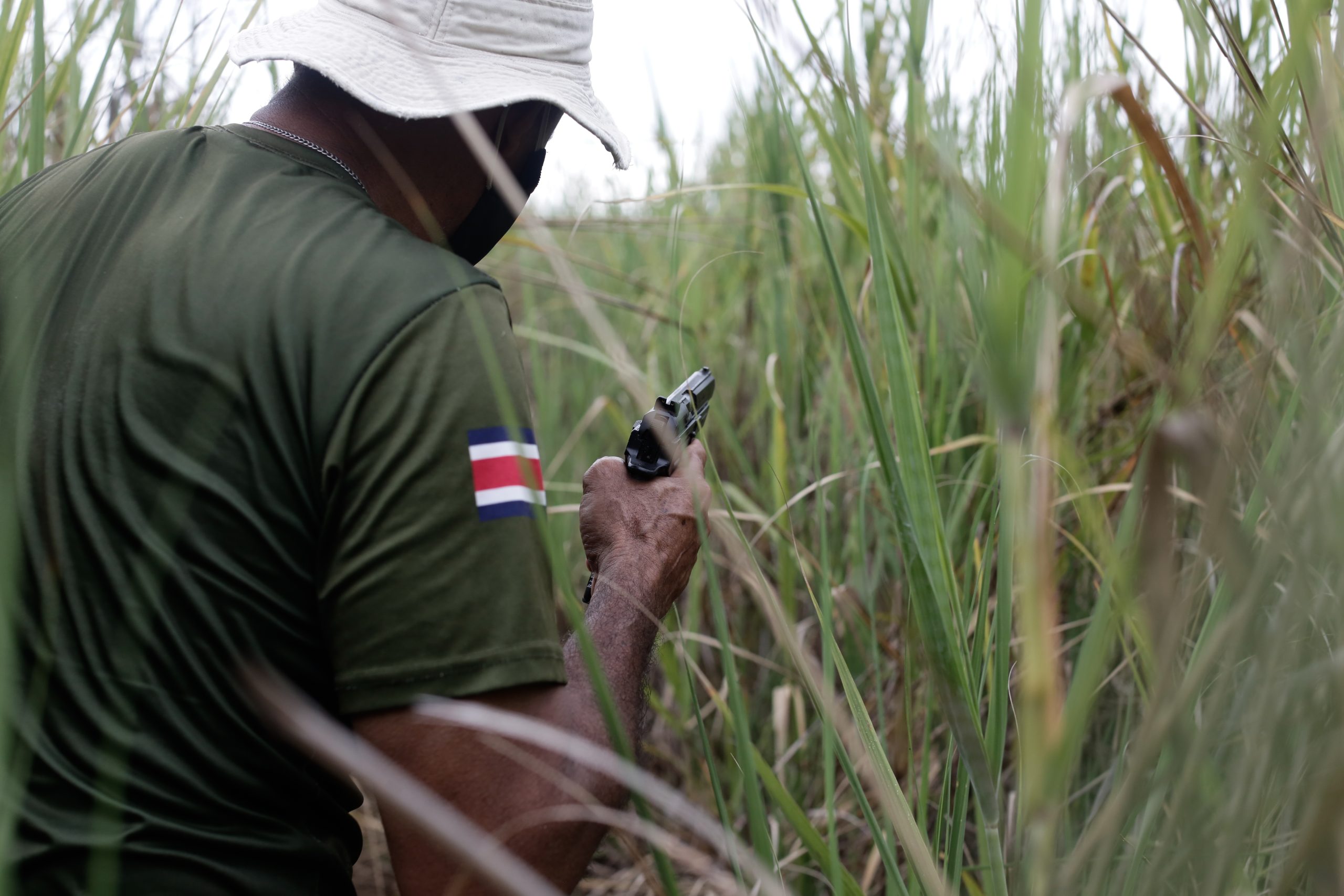
The conditions of this pair of park rangers are the norm in the rest of Costa Rica’s protected areas, explains Paniagua, vice minister for the environment. “These things (overtime, transportation, money for emergencies) are currently in a very limiting condition,” he said.
The system, as a whole, is in danger of a “technical shutdown” in a matter of a few months, the vice minister explained. This means that some sectors would be closed to the public and others would only be able to attend to the entrance of tourists, without carrying out investigation and patrol work.
Talking of neglect in the protected areas of Costa Rica is a major statement, since 25% of the country’s territory is under some type of protection. In total, more than 13,000 km2 are protected.
“At this moment, fortunately, we are in the rainy season. But, if we had this condition during the forest fire season, we would not have the capacity to deal with an emergency situation,” said Paniagua.
In the South Pacific area of Costa Rica, the Osa Conservation Area (ACOSA) has already experienced difficulties in dealing with environmental complaints, said Sandra Martí, a member of the Regional Council of this protected area.
“That is very serious because one of the tasks of the conservation areas is to attend to complaints. For that, you have to mobilise and here there are no roads. Vehicles are abused and require maintenance, as well as gasoline for long distances. For all this, we simply don’t have a budget,” explained Martí.
Cuts to the budget for Costa Rica’s protected areas
The Covid-19 pandemic came at an inopportune moment for Costa Rica: the country’s finances had just closed 2019 with the highest fiscal deficit in recent history (7% of GDP). In other words, the emergency threatened to push Costa Rica into an even deeper fiscal crisis.
During the second half of 2020, the Legislative Assembly began to discuss the budget for 2021, amid high uncertainty about what would happen with the virus.
For this reason, the deputies put pressure on the Executive to cut at least 1% of GDP from the budget. In the end, the opposition factions (PLN, PUSC and PRN) approved a cut of ₡162 billion (about US$260 million) in the national budget.
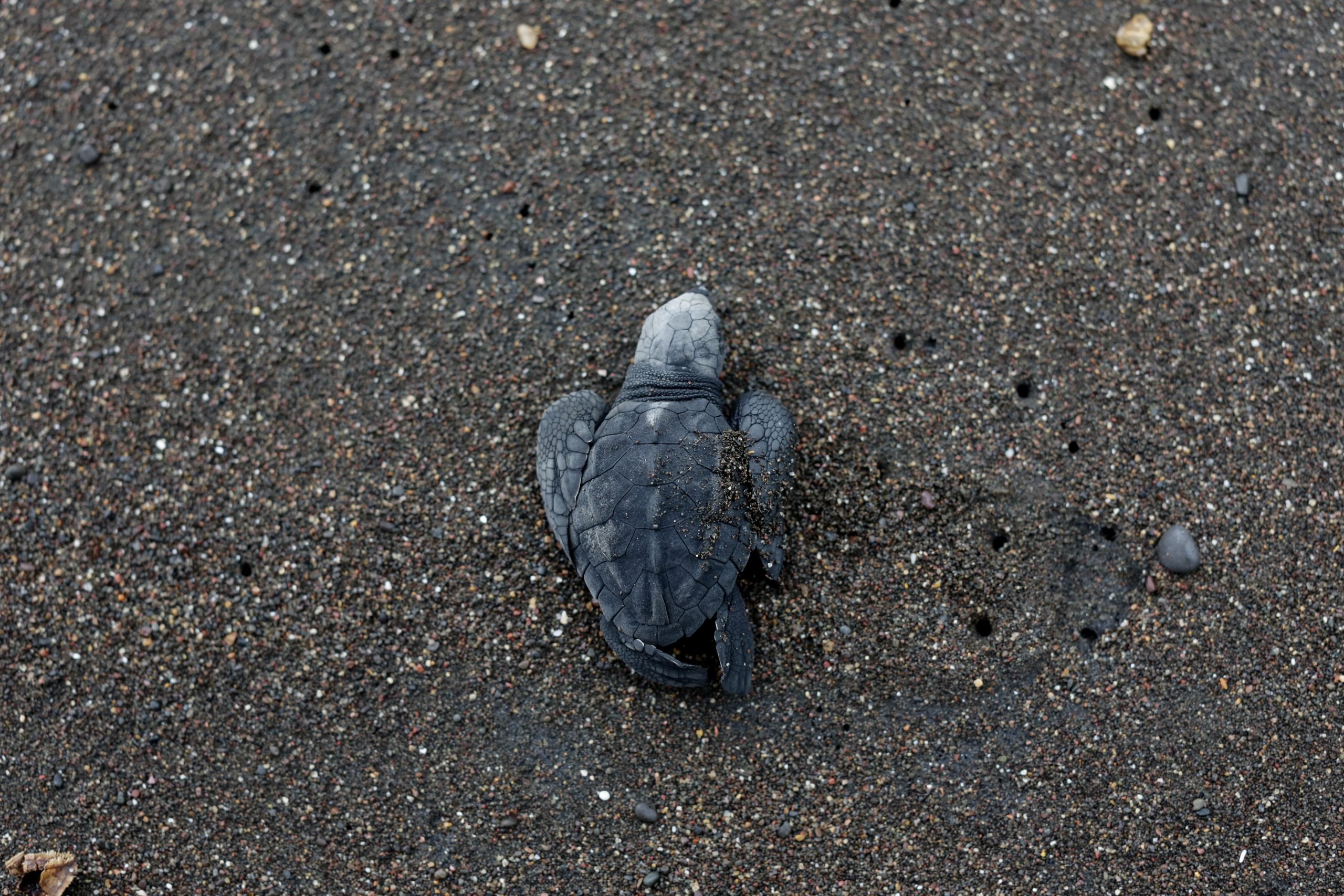
The cut put many institutions up against the wall, including SINAC (the National System of Conservation Areas). In 2020, after some budget modifications throughout the year, the Legislative Assembly ended up authorising ₡48.5 billion (US$78 million) for SINAC. But the budget approved for 2021 reduced that amount by 38%, to about ₡29.8 billion (US$48 million).
This was a tremendous blow to SINAC for two main reasons. First, money from tourists’ tickets to visit protected areas do not go directly to SINAC, but rather to the central administration. This helps ensure equality of resources between protected areas, since only four national parks tend to concentrate more than half of tourist visits. But it also means that if there is a budget cut, everyone suffers.
Another key factor is that, during the Covid-19 emergency, all taxes with a specific destination (ordered by law) passed to the central administration. This was an alternative source of income for SINAC, since, for example, the institution receives income from a canon for water use and from a general forest tax. This income disappeared.
At this moment, fortunately, we are in the rainy season. But, if we had this condition during the forest fire season, we would not have the capacity to deal with an emergency situation
To try to keep the institution afloat until the end of the year, the Executive called before Congress a series of amendments to the budget. One of them would allow SINAC to use ₡6 billion (US$9.5 million) of the remaining surplus from other years for overtime, transportation and emergencies.
According to the bill, the budget would allow maintaining the “minimum operation” of national parks, as well as preventing forest fires and paying contracts for forest protection on private farms. For all this, the money is about to run out.
The new budget has not yet advanced to the legislative plenary, but even if it is approved, the effects of the cut will be felt for the next 3-5 years, Paniagua estimated.
Among other things, the cut will delay the expansion of a digital platform for buying park tickets, as well as a significant expansion in the number of park rangers. Another impact will be felt on the maintaining of infrastructure, said Paniagua, since this depends on the national budget.
Conservation at risk
Obando and Alvarado are nearing the end of their tour of the beach. Some turtle nests have been poached by raccoons, natural predators in the area, but none by humans. They will return to the hatchery without eggs.
Had they found a nest, they would have removed the eggs and installed them in a conservation nursery, made up of several small 1m2 plots. After two months, at least 70% of the turtles in each nest will reach the sea.
This is essential conservation work, but due to both being overloaded, it is almost always carried out by volunteers. When Covid-19 fell and mobility restrictions prevented the arrival of volunteers, fewer eggs began to enter the nursery, says Obando.
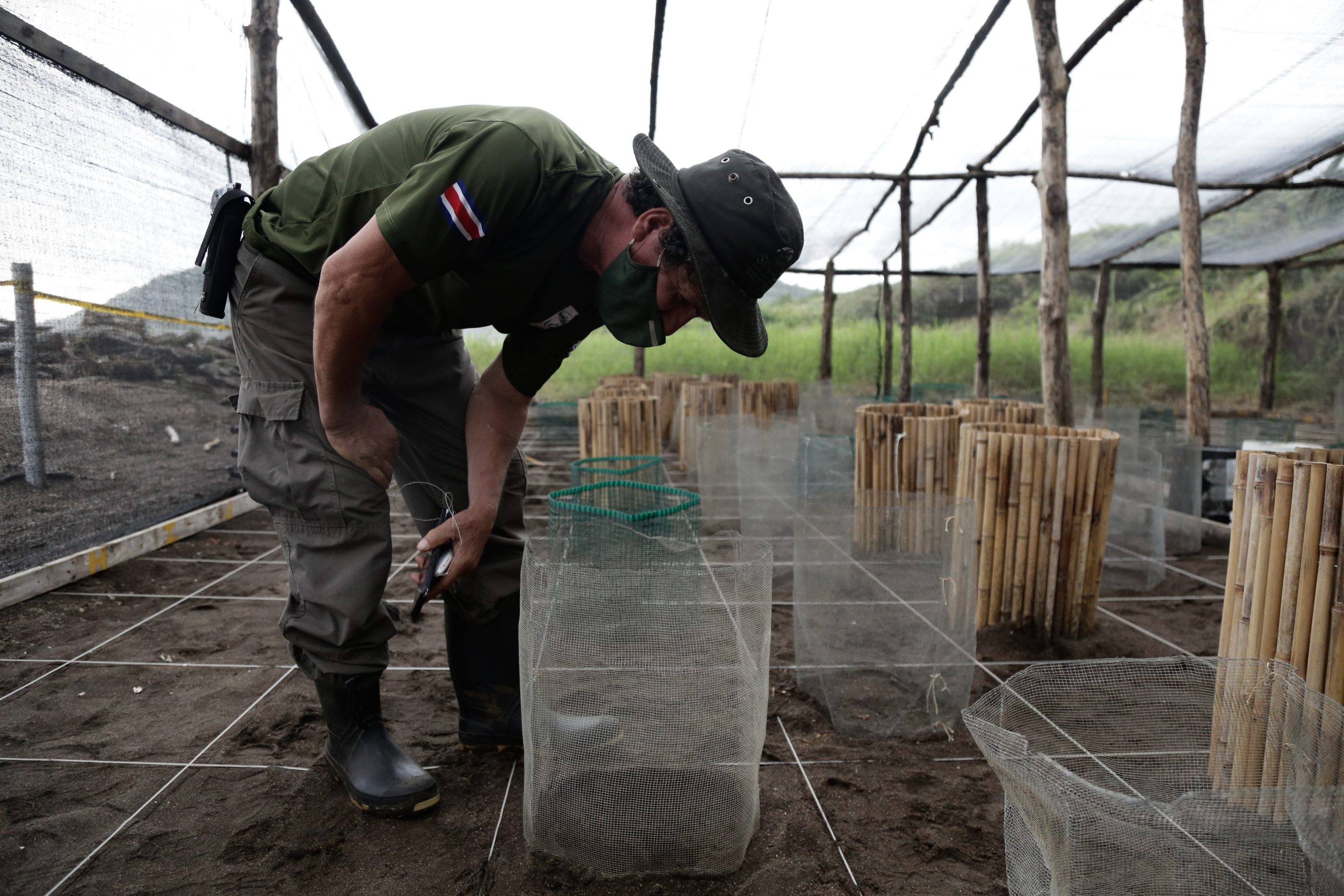
The same happens in other protected areas, explains Laura Porras from the National University. Without sufficient resources and personnel, park rangers can hardly complete conservation tasks, the scientist said.
For example, illegal hunting is a reality in many protected areas of the country. Without enough patrols, hunters enter more freely and loot wildlife, as they did to the saínos in the Corcovado National Park, southern Costa Rica.
You set up camera traps and, if there is no patrol, the cameras begin to disappear
But the problem is even bigger than it seems: when a population falls, it not only affects that species but also its predators, Porras explained. In the case of the saínos, this also ended up affecting jaguars and pumas.
In many cases, scientists even have trouble recording these phenomena with limited personnel in protected areas. “You set up camera traps and, if there is no patrol, the cameras begin to disappear,” said Porras.
Damage to wildlife also impacts local communities, says Martí from the Osa Conservation Area. “Here, practically 99% of the people depend on tourism. If tourists stop being interested in coming, all these people stop receiving income”, he pointed out.
Swimming against the current of budget cuts, Alvarado and Obando return to the administrative house of the Camaronal refuge. They will rest for a few hours, and then go out again at night, when the risk of egg theft increases.
